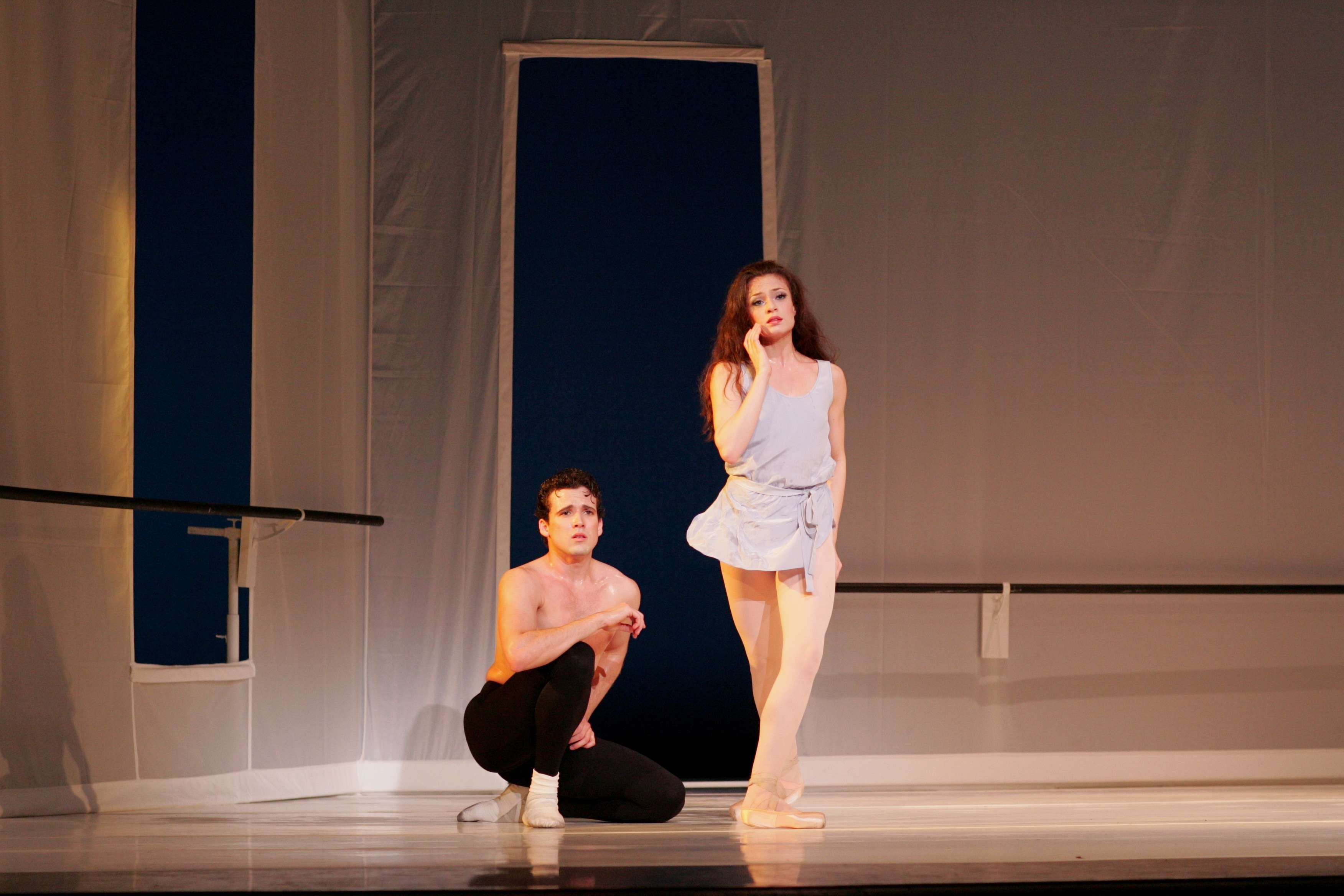|
Back
Miami City Ballet Kicks Off New Season Miami
Adrienne Arsht Center for the Performing Arts
10/21/2011 - & October 22, 23, 2011
George Balanchine (Music by A. Vivaldi & A. Corelli): Square Dance
Jerome Robbins (Music by C. Debussy): Afternoon of a Faun
Christopher Wheeldon (Music by A. Pärt): Liturgy
Twyla Tharp (Music by P. Glass): In the Upper Room
The Miami City Ballet: Jennifer Carlynn Kronenberg, Jeanette Delgado, Renan Cerdeiro, Jeremy Cox, Kleber Rebello, Tricia Albertson, Callie Manning, Mary Carmen Catoya, Didier Bramanz, Patricia Delgado, Renato Penteado, Katia Carranza, Carlos Miguel Guerra (Principal Dancers)
Opus One Orchestra, Gary Sheldon (Conductor)
Jean Rosenthal (Scenic Design), Karinska, Irene Sharif, Holly Hynes, Norma Kamali (Costume Design), John Hall, Jean Rosenthal, Mark Stanley, Jennifer Tipton (Lighting Design)

C. Guerra & J. Kronenberg (Courtesy of MCB)
Miami City Ballet experienced a triumph in Paris this past summer finding new devotees. It is great to share the company with the rest of the world, but even better to have them back where they belong.
The season’s opening program presented no new works. This is particularly satisfying because it gives the locals the opportunity to see how far the company has grown since the last time these pieces were presented. Because they are masterpieces, it is impossible to fully grasp them with just a handful of viewings. The serious ballet goer will commonly find new elements in the choreography and a particular dancer’s interpretation can awaken one to never before noticed details. The less dedicated audience members will never be bored by this program because it offers such tremendous variety.
The evening began with Balanchine’s Square Dance. One can read all the program notes about how Balanchine found the parallel between folk dance and ballet but it is not necessary to do any homework in preparation for this work. It is all there. To imagine that there was once a character of The Caller is an example of more is less. When Balanchine revised the work in 1976, that character was dropped and it seems evident that the work probably became much stronger. The solo for the male lead was added and when delivered by the leggy and commanding Renan Cerdeiro, this movement adds a necessary gravitas to the work. The female leader of the barn raising, Jeanette Delgado, attacks each entrance with a zeal that can be felt far into the highest reaches of the theatre. Her smile and joy is what is required to give this piece its spine. Delgado’s degree of ebullience is a benchmark; she performs with complete command and honesty. The corps jubilantly matches her precision, speed and intensity.
Next up was Jerome Robbins’ Afternoon of a Faun, arguably the most erotic ballet in the entire repertory. The pleasure of the young man’s sexual fantasy could not be more well-defined than in the perpendicular lifting of his leg. This ballet is not filled with giant leaps and other pyrotechnics that many audience members crave. Like Debussy’s music, it is about subtly creating impressions. When the curtain goes up and we see a scrim in front of the dance studio, nothing can better explain the work’s dreamy setting. This ballet dates to 1953; a time when one could count on a choreographer to have confidence that an audience could get it without hitting us over the head. Thanks for your respect, Mr. Robbins. This seemingly simple work can often fail in spite of the strength of the performers. Without the necessary chemistry between the characters, it will fizzle. But when you have dancing actors as confident as Carlos Miguel Guerra and Jennifer Carlynn Kronenberg, the auditorium becomes very steamy.
But a cold shower will have to wait because Faun is quickly followed by another duet, Christopher Wheeldon’s Liturgy. Upon seeing this work the first time several seasons back, I was thrilled but wasn’t sure that it would have significant impact on repeated viewings. How great it can feel to be wrong! This abstract work probably will have a different importance to each of us as we observe a couple’s spiritual quest. Who knows what it means? Who cares? It is a very personal work performed to Arvo Pärt’s Fratres for Violin, Strings, and Percussion. We are reminded that many great works of dance have been created on very familiar pieces of music. Katia Carranza and Isanusi Garcia-Rodriguez use their torsos to create a climate of almost paralyzing intensity.
This ambitious opener concluded with an energetic performance of Twyla Tharp’s In the Upper Room performed to recorded music composed by Philip Glass. Though certainly not in the league of the program’s other works, this Tharp crowd pleaser seems to improve with repeated exposures. This program will be presented in Fort Lauderdale at the Broward Center October 28-30 and in Palm Beach at the Kravis Center December 9-11.
Jeff Haller
|